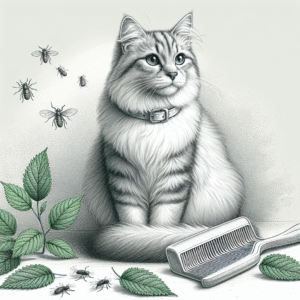
Cats, with their enigmatic personalities and independent spirits, are often perceived as low-maintenance pets. However, like humans and other animals, they can also experience stress. Stress in cats can arise from various factors such as changes in the environment, the arrival of new pets or family members, or even subtle shifts in household routines. Recognizing and relieving stress in cats is vital for their overall well-being and health. This article explores the top cat calming techniques to help your feline friend lead a serene and content life.
Understanding Cat Stress: Signs and Causes
Before diving into the calming techniques, it is essential to understand the signs and causes of stress in cats. Stress in cats can manifest through various behavioral changes such as excessive grooming, increased vocalization, inappropriate urination, aggression, or withdrawal. Identifying the root cause is the first step toward effectively addressing the stress.
Common Causes of Stress in Cats
- Changes in Environment: Cats are creatures of habit, and any change in their environment, like moving to a new home or rearranging furniture, can be unsettling.
- Presence of New Pets or People: Introducing a new pet or a baby into the household can lead to anxiety and territorial stress in cats.
- Noisy Surroundings: Loud noises from construction, fireworks, or even household appliances can be distressing for cats.
- Lack of Stimulation: Cats need mental and physical stimulation. A lack of it can lead to boredom and stress.
- Health Issues: Sometimes, stress can be a symptom of underlying health issues. Regular veterinary check-ups are crucial.
Top Cat Calming Techniques
1. Create a Safe Space
One of the most effective ways to help a stressed cat is by providing a safe and secure environment. Designate a quiet area in your home where your cat can retreat when feeling overwhelmed. This space should include cozy bedding, some of your cat’s favorite toys, and easy access to food and water. Make sure this area remains undisturbed by other pets or household activities.
2. Use Feline Pheromones
Feline pheromone products, available as diffusers, sprays, or collars, can significantly help in reducing stress levels. These products mimic natural cat pheromones, creating a sense of familiarity and security. They are particularly useful in multi-cat households or during stressful events like moving or traveling.
3. Engage in Interactive Play
Playtime is not just a fun activity but also a crucial stress-relief method for cats. Engaging your cat in interactive play with toys like feather wands, laser pointers, or puzzle feeders helps channel their energy positively. It also strengthens the bond between you and your cat, providing emotional reassurance.
4. Regular Grooming Sessions
Grooming is a comforting activity for many cats. Regular brushing not only keeps their coat healthy but also provides a soothing sensation. During grooming sessions, pay attention to any signs of discomfort or pain, as these could indicate health issues contributing to stress.
5. Provide Vertical Spaces
Cats love to climb and observe their surroundings from a height. Providing vertical spaces, like cat trees or wall-mounted shelves, allows them to explore and feel secure. These elevated spaces can act as safe retreats where cats can relax and survey their territory.
6. Maintain a Consistent Routine
Cats thrive on routine. Keeping feeding, play, and sleep schedules consistent can help reduce anxiety. Sudden changes in their daily routine can lead to stress, so try to keep changes to a minimum and introduce them gradually when necessary.
7. Use Calming Music or Sounds
Music and specific sounds can have a calming effect on cats. There are playlists and albums specifically designed for pets that incorporate soothing sounds and melodies. Playing these during stressful times, like thunderstorms or fireworks, can help alleviate anxiety.
8. Herbal Remedies and Supplements
Some herbal remedies and dietary supplements can help in calming stressed cats. Products containing ingredients like chamomile, valerian root, or L-theanine may promote relaxation. However, it is important to consult with a veterinarian before introducing any new supplements to ensure they are safe and suitable for your cat.
9. Practice Patience and Gentle Interaction
Your demeanor can significantly influence your cat’s stress levels. Approach your cat calmly and speak in soft tones. Avoid forcing interactions, especially if your cat seems withdrawn or aggressive. Allowing your cat to come to you on their terms fosters trust and reduces stress.
10. Seek Professional Help if Necessary
If your cat’s stress levels remain high despite your best efforts, it may be time to seek professional help. A veterinarian can rule out any medical conditions and may recommend a consultation with a feline behaviorist. These professionals can provide tailored strategies to address your cat’s specific needs.
Conclusion
Understanding and managing stress in cats is crucial for their health and happiness. By creating a supportive environment, maintaining a consistent routine, and utilizing calming techniques, you can help your feline friend navigate through stressful situations more comfortably. Remember, every cat is unique, so it may take some time to identify the most effective methods for your pet. With patience and attention, you can significantly enhance the quality of life for your beloved cat.
#ChatGPT assisted in the creation of this article.








